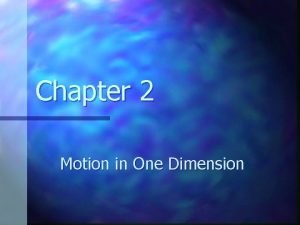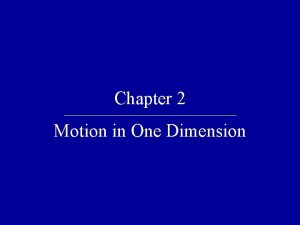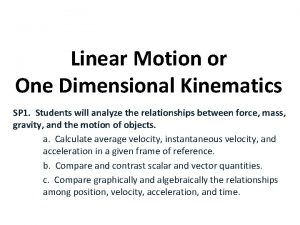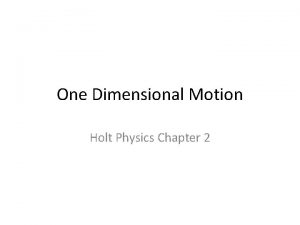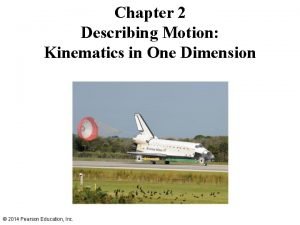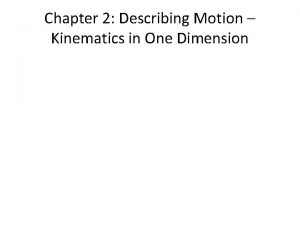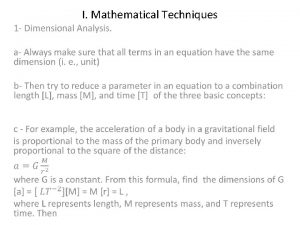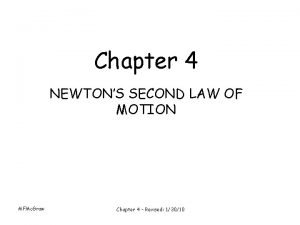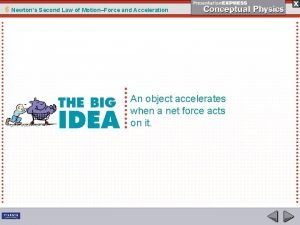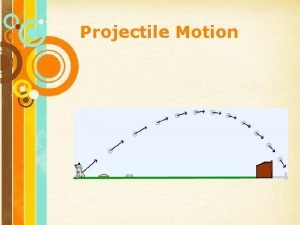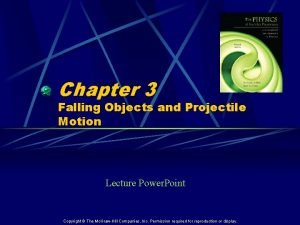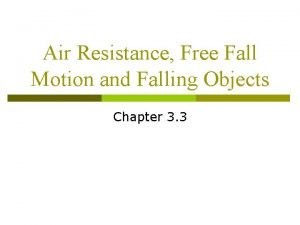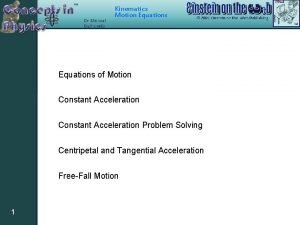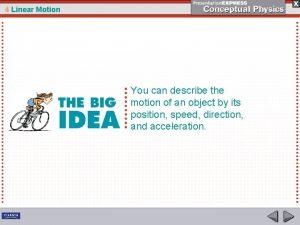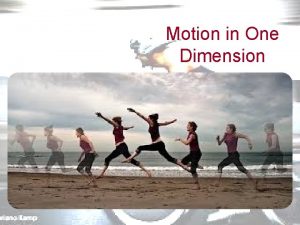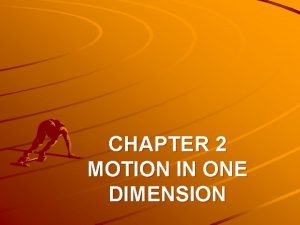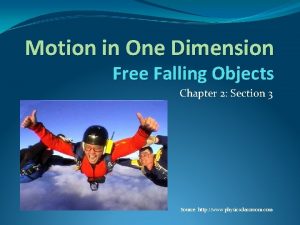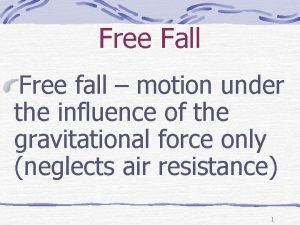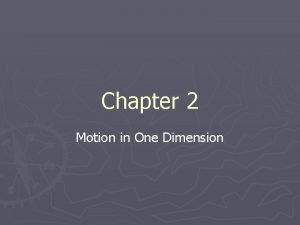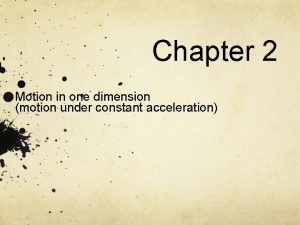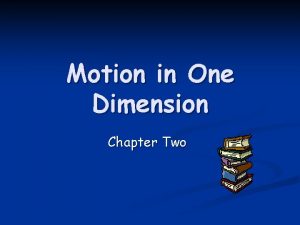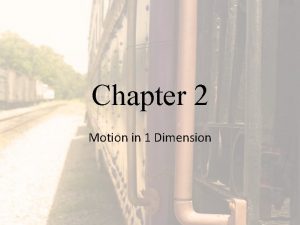Chapter 2 Motion in One Dimension Free Fall
















- Slides: 16

Chapter 2 Motion in One Dimension

Free Fall n n All objects moving under the influence of only gravity are said to be in free fall All objects falling near the earth’s surface fall with a constant acceleration Galileo originated our present ideas about free fall from his inclined planes The acceleration is called the acceleration due to gravity, and indicated by g

Acceleration due to Gravity n Symbolized by g n g = 9. 8 m/s² n g is always directed downward n toward the center of the earth

Non-symmetrical Free Fall Need to divide the motion into segments n Possibilities include n n n Upward and downward portions The symmetrical portion back to the release point and then the nonsymmetrical portion

Combination Motions

Chapter 3 Vectors and Two-Dimensional Motion

Vector Notation n When handwritten, use an arrow: n When printed, will be in bold print: A n When dealing with just the magnitude of a vector in print, an italic letter will be used: A

Properties of Vectors n Equality n of Two Vectors Two vectors are equal if they have the same magnitude and the same direction n Movement n of vectors in a diagram Any vector can be moved parallel to itself without being affected

Adding Vectors n When adding vectors, their directions must be taken into account n Units must be the same n Graphical Methods n Use scale drawings n Algebraic n Methods More convenient

Graphically Adding Vectors, cont. Continue drawing the vectors “tip-to-tail” n The resultant is drawn from the origin of A to the end of the last vector n Measure the length of R and its angle n n Use the scale factor to convert length to actual magnitude AF_0306. swf

Notes about Vector Addition n Vectors obey the Commutative Law of Addition n The order in which the vectors are added doesn’t affect the result

Vector Subtraction Special case of vector addition n If A – B, then use A+(-B) n Continue with standard vector addition procedure n

Components of a Vector A component is a part n It is useful to use rectangular components n n These are the projections of the vector along the xand y-axes

Components of a Vector, cont. n The x-component of a vector is the projection along the x-axis n The y-component of a vector is the projection along the y-axis n Then,

More About Components of a Vector n The previous equations are valid only if θ is measured with respect to the x-axis The components can be positive or negative and will have the same units as the original vector n The components are the legs of the right triangle whose hypotenuse is A n n May still have to find θ with respect to the positive x-axis

Adding Vectors Algebraically n Grandma’s house n Add all the x and y-components n This gives Rx and Ry: n Use the Pythagorean Theorem to find the magnitude of the Resultant: n Use the inverse tangent function to find the direction of R:
 Free fall motion in one dimension
Free fall motion in one dimension Vf-vo
Vf-vo Motion in one dimension quiz
Motion in one dimension quiz Kinematics in one dimension
Kinematics in one dimension Holt physics chapter 2
Holt physics chapter 2 Motion in one dimension
Motion in one dimension Describing motion kinematics in one dimension
Describing motion kinematics in one dimension Describing motion kinematics in one dimension
Describing motion kinematics in one dimension Horizontal y vertical
Horizontal y vertical Mathematical techniques
Mathematical techniques Newton's second law of motion free fall
Newton's second law of motion free fall Laws of acceleration
Laws of acceleration Projectile motion ppt free download
Projectile motion ppt free download Free fall upward motion
Free fall upward motion Free fall upward motion
Free fall upward motion Free fall motion
Free fall motion Free fall motion
Free fall motion
